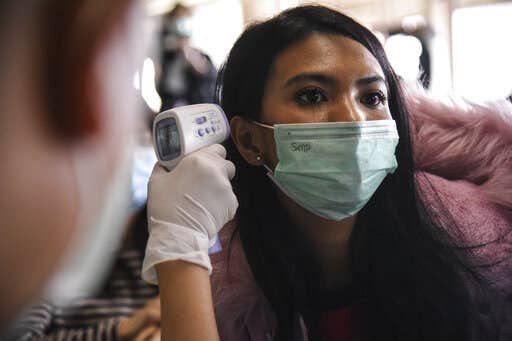
The journalists at BuzzFeed News are proud to bring you trustworthy and relevant reporting about the coronavirus. To help keep this news free, become a member and sign up for our newsletter, Outbreak Today.
The CDC is now warning there are nine main symptoms for COVID-19.
The common symptoms, which may appear in some combination within 2 to 14 days after exposure to the virus, are:
- Cough
- Shortness of breath or difficulty breathing
- Fever
- Chills
- Repeated shaking with chills
- Muscle pain
- Headache
- Sore throat
- New loss of taste or smell
The CDC notes online that even the updated symptom list is not comprehensive. Federal officials warn that if someone is experiencing “emergency warning signs” for COVID-19 — such as trouble breathing, persistent pain or pressure in the chest, or bluish lips or face — they should seek medical attention immediately.
Earlier this month, the CDC had only listed cough, shortness of breath or difficulty breathing, and fever as the primary symptoms. This short list reflected the prevalence of these symptoms reported in people who were infected in China, where the disease originated.
According to one report released by the World Health Organization, based on nearly 56,000 confirmed cases in China as of Feb. 20, most infected people were observed to have a fever (87.9%) or dry cough (67.7%) — but a recent Journal of the American Medical Association study of 5,700 patients who were sick enough to be admitted to New York City hospitals found that only 31% had a fever.
As more people have become infected and died worldwide, with about 1 million confirmed infections so far in the United States, the health community’s understanding of the disease has increased greatly.
In late March, a group of ear, nose, and throat doctors in the United Kingdom wrote an open letter detailing reports of patients with a loss of taste and smell in South Korea, Italy, and some other locations with high rates of COVID-19 cases. Since then, a growing number of people worldwide have reported the complete loss of smell or taste, both alone and in combination with other COVID-19 symptoms. A CDC report from April 14 detailing coronavirus infections in US health care workers, for example, found 750 (or 16%) of the 4,707 people with reported symptoms experienced a loss of taste or smell.
While health experts previously thought the virus was mostly spread by observably sick people, it is currently accepted that people can spread the disease before they start exhibiting symptoms. Others with the disease may never experience symptoms at all, while still being able to spread the infection to others. Moreover, medical experts have come to understand that even young and healthy people with no underlying conditions can get critically ill and die from the disease.
The Council of State and Territorial Epidemiologists in early April issued updated COVID-19 guidance, which recommended health care providers report patients who have one of the following symptoms (cough, shortness of breath, or difficulty breathing) or at least two of these other symptoms: fever, chills, "rigors" or shivering combined with a fever, "myalgia" or muscle soreness, headache, sore throat, or loss of smell or taste.
The CDC expanded its symptom list in response, according to an agency spokesperson.
